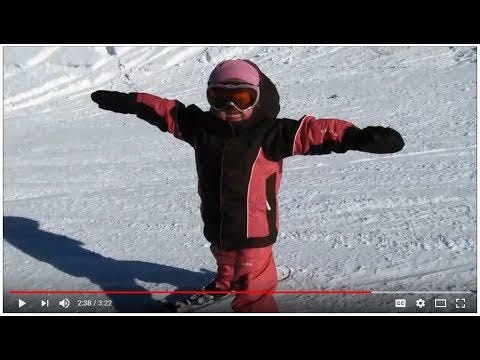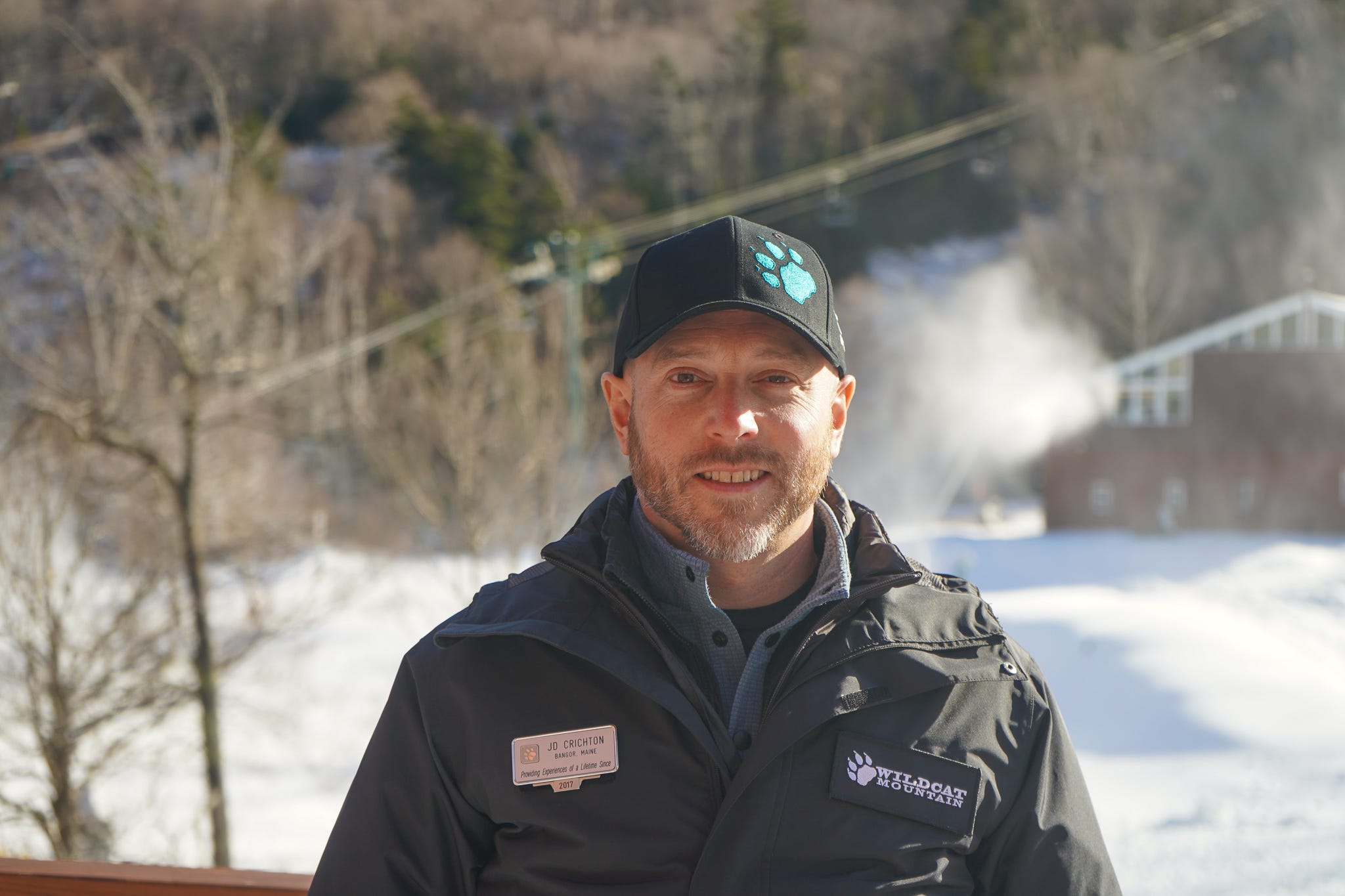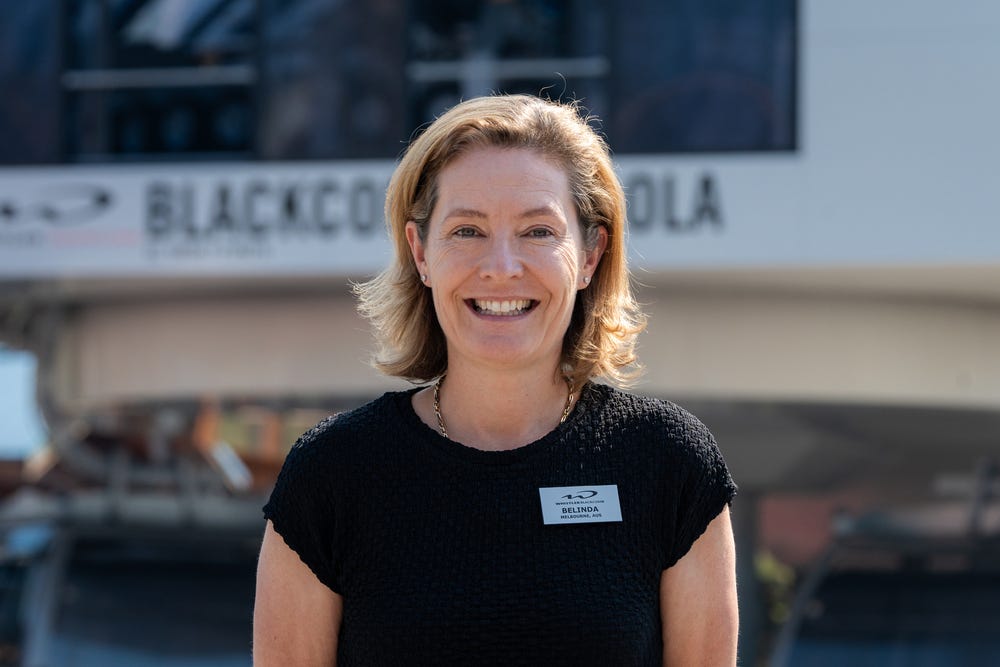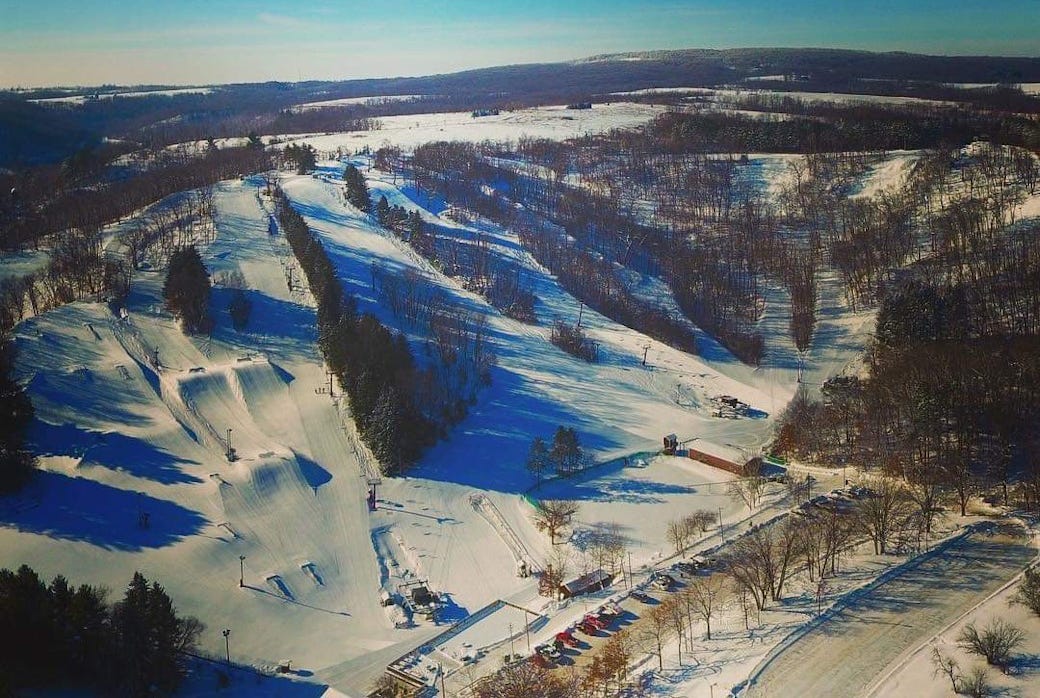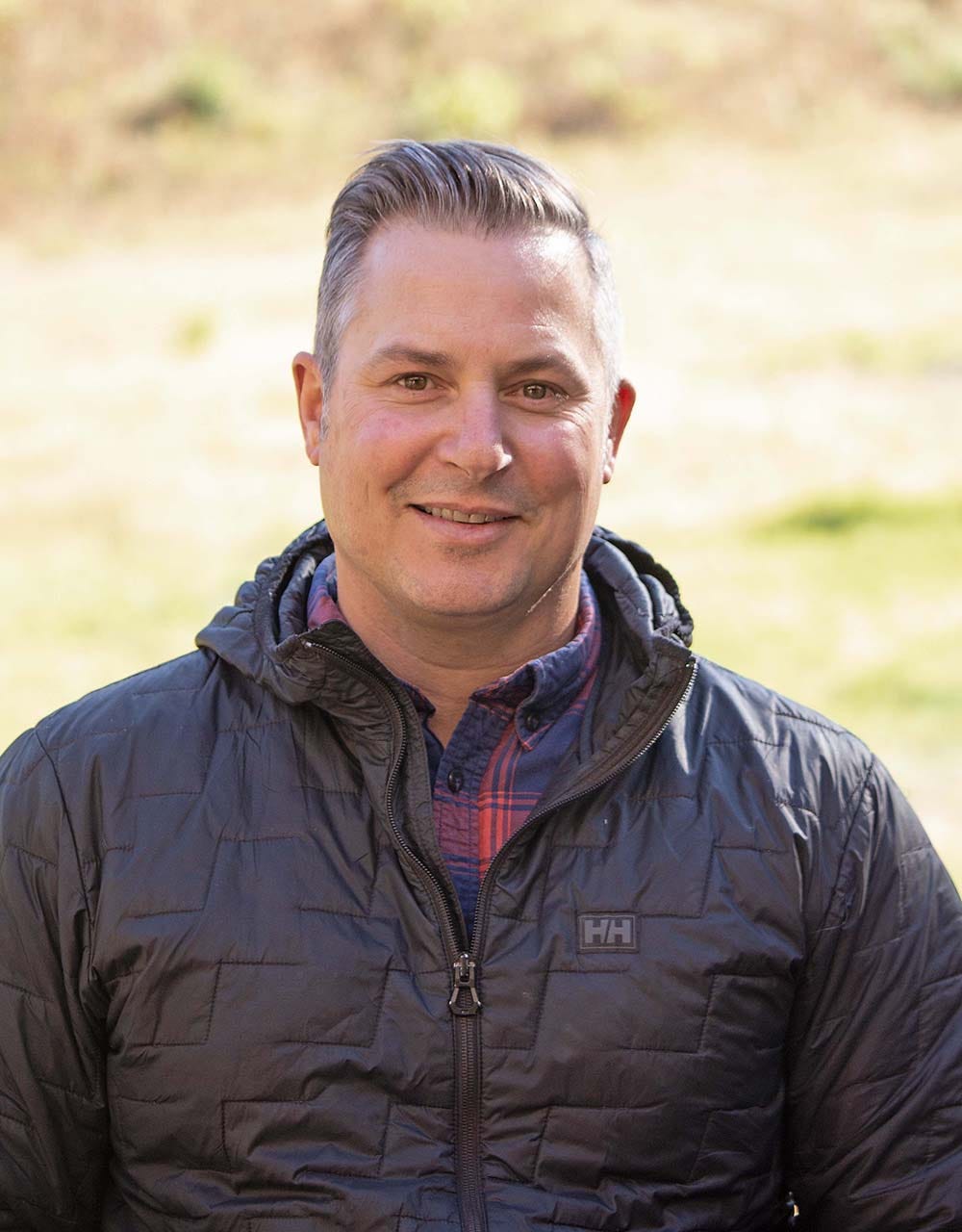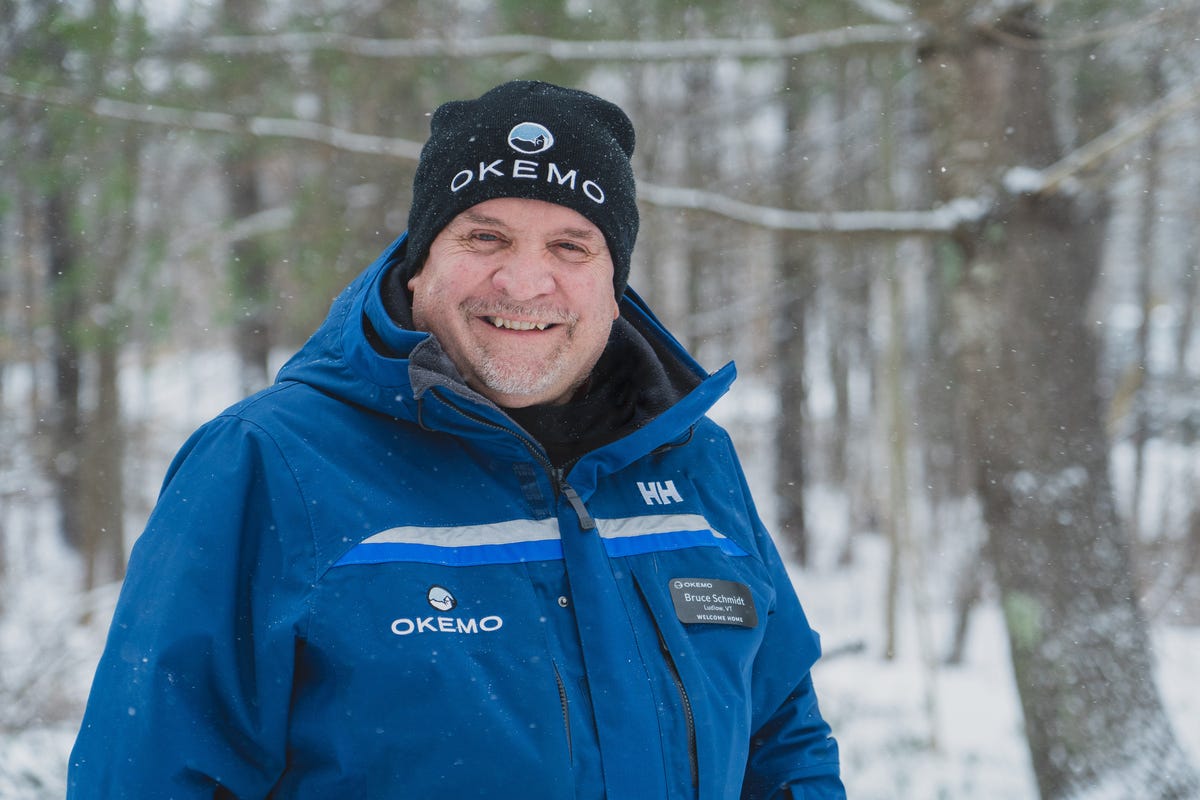Podcast #162: Camelback Managing Director David Makarsky
Description
This podcast hit paid subscribers’ inboxes on Feb. 12. It dropped for free subscribers on Feb. 19. To receive future pods as soon as they’re live, and to support independent ski journalism, please consider an upgrade to a paid subscription. You can also subscribe to the free tier below:
Who
David Makarsky, General Manager of Camelback Resort, Pennsylvania
Recorded on
February 8, 2024
About Camelback
Click here for a mountain stats overview
Owned by: KSL Capital, managed by KSL Resorts
Located in: Tannersville, Pennsylvania
Year founded: 1963
Pass affiliations:
* Ikon Pass: 7 days, no blackouts
* Ikon Base Pass: 5 days, holiday blackouts
Reciprocal partners: None
Closest neighboring ski areas: Shawnee Mountain (:24), Jack Frost (:26), Big Boulder (:27), Skytop Lodge (:29), Saw Creek (:37), Blue Mountain (:41), Pocono Ranchlands (:43), Montage (:44), Hideout (:51), Elk Mountain (1:05 ), Bear Creek (1:09 ), Ski Big Bear (1:16 )
Base elevation: 1,252 feet
Summit elevation: 2,079 feet
Vertical drop: 827 feet
Skiable Acres: 166
Average annual snowfall: 50 inches
Trail count: 38 (3 Expert Only, 6 Most Difficult, 13 More Difficult, 16 Easiest) + 1 terrain park
Lift count: 13 (1 high-speed six-pack, 1 high-speed quad, 1 fixed-grip quad, 3 triples, 3 doubles, 4 carpets – view Lift Blog’s inventory of Camelback’s lift fleet)
View historic Camelback trailmaps on skimap.org.
Why I interviewed him
At night it heaves from the frozen darkness in funhouse fashion, 800 feet high and a mile wide, a billboard for human life and activity that is not a gas station or a Perkins or a Joe’s Vape N’ Puff. The Poconos are a peculiar and complicated place, a strange borderland between the Midwest, the Mid-Atlantic, and the Northeast. Equidistant from New York City and Philadelphia, approaching the northern tip of Appalachia, framed by the Delaware Water Gap to the east and hundreds of miles of rolling empty wilderness to the west, the Poconos are gorgeous and decadent, busyness amid abandonment, cigarette-smoking cement truck drivers and New Jersey-plated Mercedes riding 85 along the pinched lanes of Interstate 80 through Stroudsburg. “Safety Corridor, Speed Limit 50,” read the signs that everyone ignores.
But no one can ignore Camelback, at least not at night, at least not in winter, as the mountain asserts itself over I-80. Though they’re easy to access, the Poconos keeps most of its many ski areas tucked away. Shawnee hides down a medieval access road, so narrow and tree-cloaked that you expect to be ambushed by poetry-spewing bandits. Jack Frost sits at the end of a long access road, invisible even upon arrival, the parking lot seated, as it is, at the top of the lifts. Blue Mountain boasts prominence, rising, as it does, to the Appalachian Trail, but it sits down a matrix of twisting farm roads, off the major highway grid.
Camelback, then, is one of those ski areas that acts not just as a billboard for itself, but for all of skiing. This, combined with its impossibly fortuitous location along one of the principal approach roads to New York City, makes it one of the most important ski areas in America. A place that everyone can see, in the midst of drizzling 50-degree brown-hilled Poconos February, is filled with snow and life and fun. “Oh look, an organized sporting complex that grants me an alternative to hating winter. Let’s go try that.”
The Poconos are my best argument that skiing not only will survive climate change, but has already perfected the toolkit to do so. Skiing should not exist as a sustained enterprise in these wild, wet hills. It doesn’t snow enough and it rains all the time. But Poconos ski area operators invested tens of millions of dollars to install seven brand-new chairlifts in 2022. They didn’t do this in desperate attempts to salvage dying businesses, but as modernization efforts for businesses that are kicking off cash.
In six of the past eight seasons, (excluding 2020), Camelback spun lifts into April. That’s with season snowfall totals of (counting backwards from the 2022-23 season), 23 inches, 58 inches, 47 inches, 29 inches, 35 inches, 104 inches (in the outlier 2017-18 season), 94 inches, 24 inches, and 28 inches. Mammoth gets more than that from one atmospheric river. But Camelback and its Poconos brothers have built snowmaking systems so big and effective, even in marginal temperatures, that skiing is a fixture in a place where nature would have it be a curiosity.
What we talked about
Camelback turns 60; shooting to ski into April; hiding a waterpark beneath the snow; why Camelback finally joined the Ikon Pass; why Camelback decided not to implement Ikon reservations; whether Camelback season passholders will have access to a discounted Ikon Base Pass; potential for a Camelback-Blue Mountain season pass; fixing the $75 season pass reprint fee (they did); when your job is to make sure other people have fun; rethinking the ski school and season-long programs; yes I’m obsessed with figuring out why KSL Capital owns Camelback and Blue Mountain rather than Alterra (of which KSL Capital is part-owner); much more than just a ski area; rethinking the base lodge deck; the transformative impact of Black Bear 6; what it would take to upgrade Stevenson Express; why and how Camelback aims to improve sky-high historic turnover rates (and why that should matter to skiers); internal promotions within KSL Resorts; working with sister resort Blue Mountain; rethinking Camelback’s antique lift fleet; why terrain expansion is unlikely; Camelback’s baller snowmaking system; everybody hates the paid parking; and long-term plans for the Summit House.
Why I thought that now was a good time for this interview
A survey of abandoned ski areas across the Poconos underscores Camelback’s resilience and adaptation. Like sharks or alligators, hanging on through mass extinctions over hundreds of millions of years, Camelback has found a way to thrive even as lesser ski centers have surrendered to the elements. The 1980 edition of The White Book of Ski Areas names at least 11 mountains – Mt. Tone, Hickory Ridge, Tanglwood, Pocono Manor, Buck Hill, Timber Hill (later Alpine Mountain), Tamiment Resort Hotel, Mt. Airy, Split Rock, Mt. Heidelberg, and Hahn Mountain – within an hour of Camelback that no longer exist as organized ski areas.
Camelback was larger than all of those, but it was also smarter, aggressively expanding and modernizing snowmaking, and installing a pair of detachable chairlifts in the 1990s. It offered the first window into skiing modernity in a region where the standard chairlift configuration was the slightly ridiculous double-double.
Still, as recently as 10 years ago, Camelback needed a refresh. It was crowded and chaotic, sure, but it also felt dumpy and drab, with aged buildings, overtaxed parking lots, wonky access roads, long lines, and bad food. The vibe was very second-rate oceanfront boardwalk, very take-it-or-leave-it, a dour self-aware insouciance that seemed to murmur, “hey, we know this ain’t the Catskills, but if they’re so great why don’chya go there?”
Then, in 2015, a spaceship landed. A 453-room hotel with a water park the size of Lake George, it is a ridiculous building, a monstrosity on a hill, completely out of proportion with its surroundings. It looks like something that fell off the truck on its way to Atlantic City. And yet, that hotel ignited Camelback’s renaissance. In a region littered with the wrecks of 1960s heart-shaped-hottub resorts, here was something vital and modern and clean. In a redoubt of day-ski facilities, here was a ski-in-ski-out option with decent restaurants and off-the-hill entertainment for the kids. In a drive-through region that felt forgotten and tired, here was something new that people would stop for.
The owners who built that monstrosity/business turbo-booster sold Camelback to KSL Capital in 2019. KSL Capital also happens to be, along with Aspen owner Henry Crown, part owner of Alterra Mountain Company. I’ve never really understood why KSL outsourced the operation of Camelback and, subsequently, nearby Blue Mountain, to its hotel-management outfit KSL Resorts, rather than just bungee-cording both to Alterra’s attack squadron of ski resorts, which includes Palisades Tahoe, Winter Park, Mammoth, Steamboat, Sugarbush, and 14 others, including, most recently, Arapahoe Basin and Schweitzer. It was as if the Ilitch family, which owns both the Detroit Tigers and Red Wings, had drafted hockey legend Steve Yzerman and then asked him to bat clean-up at Comerica Park.
While I’m still waiting on a good answer to this question even as I annoy long lines of Alterra executives and PR folks by persisting with it, KSL Resorts has started to r



